I've been messing with Hamelman's 40% rye with caraway. I like to stick to wild yeast and the bread calls for a bit of commercial yeast. He does suggest that you can just leave it out and ferment it longer, but I wanted to experiment with a long bulk fermentation of the wheat along with the 15 hour preparation of the rye sour. I wanted to bring out more flavour in the wheat as a background against the caraway. It worked out well with my starter refreshment schedule; I have 30g of 100% rye starter discard, I used 17g with the 363g of rye flour and 300g of water. And 13g with the 544g of wheat flour and 318g of water. I didn't want the wheat to get into a proteolytic state, but I did want lots of time for flavour to develop. I mixed both sourdoughs and put them in a 70F water bath for 15 hours.
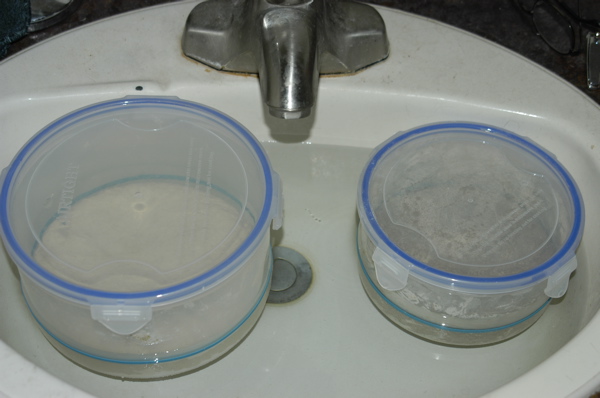
I put them in the bath at 6pm last night so they'd be ready at 9am today to turn into dough.
Actually I'm still working on my ideal temperature for the wheat sour fermentation. I've tried keeping it next to the bed so that I can see it every time I get up to pee and once there's definite movement I put it in the 'fridge. With only the 10g of starter in there it does take awhile to get going. I don't really like the wheat being cold and the rye not, so I'm not too keen on that method. Tonight is cooler so I'm going to put it outside on the deck and then in the morning I'll put it in the water bath with the rye. I'm making a couple of loaves to send to my brother. Starting around 11 tonight means I'll be mixing the dough around 2pm tomorrow. I should put the wheat in the water bath with the rye around 9am.
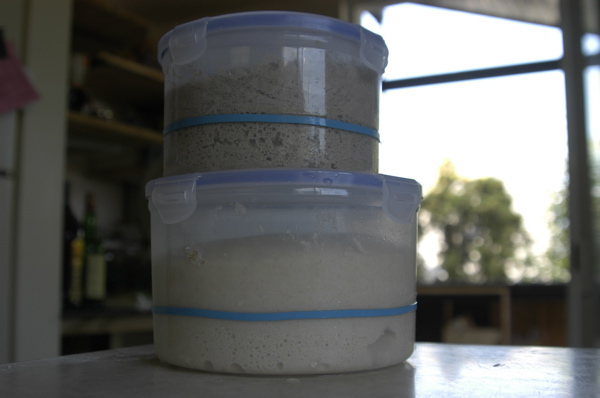
That's a little more rise than I wanted with the wheat. I have been shooting for a little less than double. Interestingly the rye sounded like a bowl of Rice Crispies when I opened it. Very noisy.
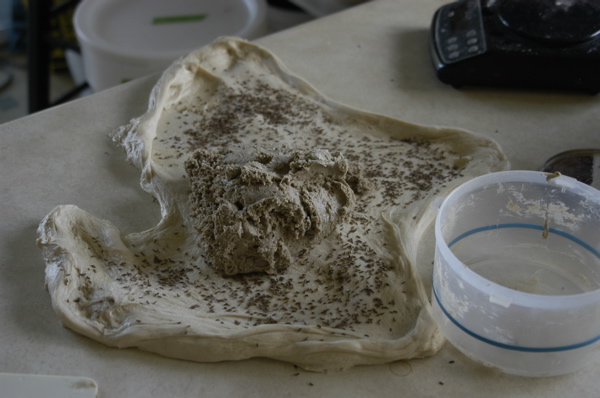
I've played with a few ways to combine the two sours and this is what's working best for me. I spread the wheat out on the counter and smear the rye around on top of it. I sprinkle in some salt and caraway along the way. (17g of each total)
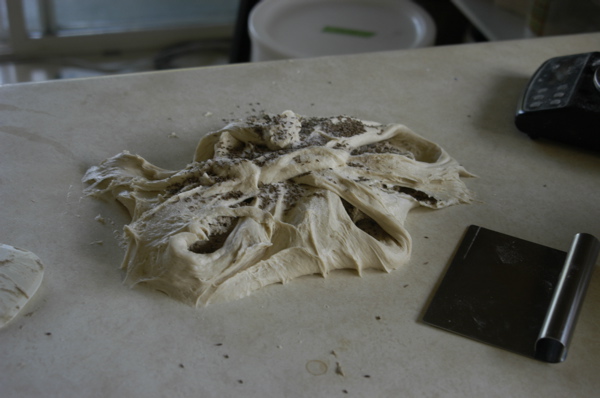
Then enfold the rye with the wheat. I sprinkle more salt and caraway seeds in along the way.

It's pretty messy at first, but it quickly comes together into a nice dough. I knead it 5 minutes maximum to be sure to not overdo the rye but still get everything homogenous. The gluten is already nicely developed in the wheat. A few slap and folds at the end and it's really looking good:
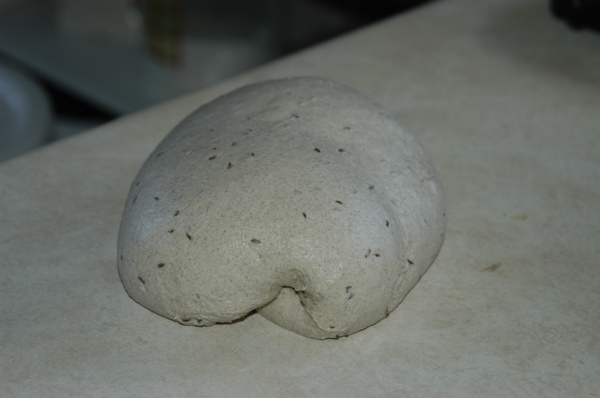
It's a beautiful dough very quickly. I let it bulk ferment a bit more. It's already pretty developed from the last 15 hours. Today it just moved a little after 45 minutes. Sometimes it's more active than that. I want to get some gas structure, I have been waiting for it to about half again in bulk, but today it just wasn't moving too quickly and I just moved on to shaping and proofing. The dough does feel a bit putty-like compared to all wheat dough.

I think dough in a couche is beautiful. Two loaves, each about 780g of dough.

I let them proof an hour, seam side up. I rolled the tops in caraway seeds prior to proofing. I misted before scoring. I baked at 460 10 minutes with steam and baked another 20 minutes at 430F.

voila! I like the oven spring.

et voila! Kinda weird lighting, sorry about that. The crumb is plenty open, it's moist but not the least bit gummy and I think the taste is more tangy and complex. I've made this a few times now and it's seeming to be something that I can count on. Hopefully those aren't famous last words. It has been very satisfying to apply some of the things that I've learned here to managing the long wheat sour ferment especially (low inoculation, cool temp, low hydration, long ferment).
By the way, this rye starter is about 3 - 4 weeks old. His name might be Sparky.
:-Paul